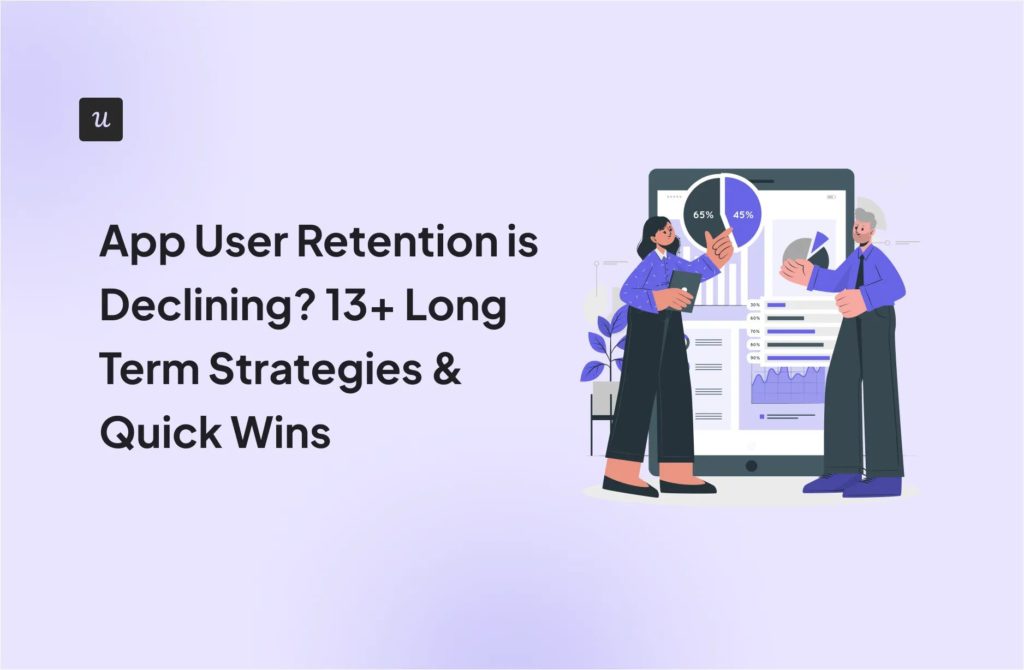
Looking for the right revenue growth formula to keep track of your numbers and know how well you’re performing?
This article shows you how to calculate revenue growth in the short and long term. You’ll also learn seven solid strategies for boosting SaaS growth, regardless of your company stage.
Get The Insights!
The fastest way to learn about Product Growth, Management & Trends.
What is revenue growth?
Revenue growth refers to the increase in a company’s revenue over a specific time period, typically measured annually or quarterly.
Why is revenue growth important? It’s a key metric for evaluating the success and sustainability of a business. Your recurring revenue figure indicates your company’s ability to attract and retain customers.
How to calculate the revenue growth rate for SaaS?
This section shows you the formula for revenue growth, how to use it, and ways to track your annual growth rate and MRR.
Revenue growth formula
Here’s how to calculate the revenue growth rate:
- Identify the current and previous period’s revenue: This could be monthly, quarterly, or yearly, depending on your analysis.
- Subtract the previous period’s revenue from the current period’s revenue.
- Divide the result by the previous period’s revenue.
- Multiply by 100% to convert the result into a percentage.

Imagine a SaaS company had $100,000 in revenue as of January 2023 and $150,000 in January 2024. Its revenue growth rate = [(150,000 – 100,000) / 100,000] x 100% = 50%
Annual growth rate
Calculate this metric using the revenue growth rate formula explained above, but you’re sticking to 12 months this time.
By tracking annual growth, your company will be positioned to make good decisions based on previous performance. This metric is also useful for demonstrating rapid growth and market traction as a startup. If you’re a mature company, the data helps you evaluate long-term growth trends and maintain shareholder value.
It’s a good idea to measure your average annual growth rate over a multi-year period—also known as Compound Annual Growth Rate (CAGR). The data will smooth out fluctuations and provide a clearer picture of long-term growth trends.
Monthly recurring revenue
MRR represents the predictable and recurring income your company generates from monthly subscription plans. Track this metric regularly as part of performance monitoring and customer success evaluation.
To calculate your MRR, use these formulas:
- Net MRR = (New MRR + Reactivation MRR + Upgrade MRR) – (Cancellation MRR + Downgrade MRR)
- MRR Growth Rate = [(Net MRR of Current Month – Net MRR of Last Month) / Net MRR of Last Month] x 100
If you’re wondering, your reactivation MRR is the monthly recurring revenue from previously churned customers who return to a paid plan. The upgrade MRR is additional income from account expansion.
What’s a good revenue growth ratio?
There’s no single “good” revenue growth ratio that applies universally to every SaaS company. The ideal growth rate depends on several factors, including industry and company growth stage.
Generally, smaller companies tend to experience faster growth rates compared to ones that have been around for longer.
According to a study by the team at Bessemer, companies with ARR between $1-10MM experienced up to 200% revenue growth rate, while more mature ones with over $100MM+ had growth rates of around 60%. On average, most companies have a YoY growth rate of around 70% regardless of growth stage.
How to improve your revenue growth strategy?
The seven strategies below will help you get better at revenue growth management. Go over them and adopt the ones you’re not yet implementing:
Decrease friction in the conversion funnel
Conduct a thorough analysis of the entire conversion funnel, from initial sign-up to paid subscription. As you do this, aim to identify specific stages where users tend to drop off or abandon the conversion process.
Once you’ve spotted the factors causing friction and drop-off, implement strategic solutions to improve the user experience.
For example, if your analysis shows your onboarding is complex and confusing, you can use interactive walkthroughs and checklists to make them more engaging.

Use reverse trials to increase the number of paying customers
Sometimes, users don’t upgrade because they aren’t sure of the value your product brings. Solve this problem by implementing reverse trial—allowing users to have full access to premium features for a limited time.
Ensure to occasionally remind them about the trial expiration even before the actual date comes. This will help them make up their minds in time, and you’ll find that many will prefer paying for the premium version to being downgraded.

Improve retention to increase customer LTV and future growth
Pay more attention to retention than customer acquisition. This is because, without a proper retention strategy, it doesn’t matter how many customers you acquire—many of them will eventually churn, making you lose money.
Your retention efforts should spread across the entire customer journey. Have retention playbooks for new users, long-term customers, and churned users.
Playbook for new users:
- Use welcome surveys to collect new customer data, segment them, and trigger personalized onboarding.
- Implement checklists and interactive walkthroughs to simplify your onboarding flow and keep it engaging.
- Have a self-serve support portal with all the resources new users will need to succeed.
Playbook for long-term customers:
- Introduce new features based on customer needs and demands.
- Implement secondary onboarding to drive fast adoption rates for new or less-used features.
Playbook for churned users:
- Use exit surveys to understand reasons for churn.
- Trigger win-back email campaigns with juicy offers for churned customers.
- Use social media to share updates, new releases, and exciting news about your product.
Increase ACV by providing consistent value
Users will stick to your brand and continue using your tool for as long as they experience positive business outcomes from their interactions.
Encourage this by ensuring each segment is actively using the core features needed for their JTBDs. Also, implement continuous onboarding to help users learn how to maximize any new features you roll out.

Improve revenue growth rates with contextual upgrades
Account expansion will drive your revenue, but how you trigger the prompts matters.
Make it a data-driven process: Segment users based on their journey stage and detect logical upsell opportunities.
For example, an effective tactic is to trigger your prompts based on customer usage patterns. If they engage so much with a specific feature, you can send an in-app message telling them there’s an advanced or related version that helps them get more done.
The Loom example below follows the same logic; the prompt was displayed only to users who have been engaging with the tool for a while.

Offer tiered pricing plans to accommodate companies of all sizes
This strategy helps you attract a diverse customer base and tailors your solution to different needs. It also allows for scalable revenue growth as your customers expand.
To make it effective, clearly define the unique value proposition for each pricing tier so customers understand the benefits associated with each plan. It’s also important that you avoid any hidden charges to prevent unnecessary revenue churn.

Increase new customers with referral programs
Conduct NPS surveys or look into your analytics to find your power users. Then, encourage them to promote your product in exchange for more features or greater usage limits.
If you make the process easy, these users will happily jump on it because there’s a good chance they’re already privately telling others about you.

Conclusion
When it comes to SaaS, it’s important to keep in mind that customer value is the engine that drives growth. Users will only stick with you if they can justify the subscription fee, and this also plays a role in determining account expansion.
If you’ve used the revenue growth formula shared in this article to calculate your figures and find them depressing, don’t panic.
Userpilot can help boost your revenue by letting you track in-app user behavior and spot ways to deliver more value to users, drive stickiness, and increase upsells/cross-sells. Our platform can also help you streamline your onboarding flow and trigger contextual in-app messages to drive user actions. Book a demo now to get started!







